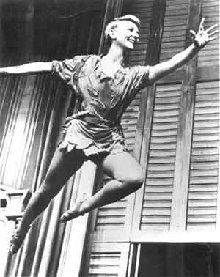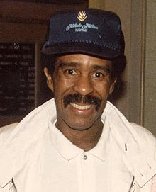Oysters in New York City have a long history as part of both the environmental and cultural environment. They were abundant in the marine life of New York–New Jersey Harbor Estuary, functioning as water filtration and as a food source beginning with Native communities in Lenapehoking. The "Oyster Islands" of Upper New York Bay were Ellis, Liberty and Black Tom.
In colonial New York, oysters were sold on the street, and also pickled and exported to other colonies, and the Caribbean. These pickled oysters were typically seasoned with nutmeg and black pepper.
Industrial history
The oyster's local history is documented in the 2006 book The Big Oyster: History on the Half Shell, focusing on the height of the oyster harvesting and restaurant industry in the 19th century.[5][6] A leading restaurateur of the early 19th century was African American Thomas Downing.
City Island, Bronx was a major source of harvesting among other places, but severe over fishing led to devastation of the oyster population. By 1916, most of the five borough's oyster beds had been closed. New York lost its status as an oyster capital in 1927 when its final remaining local oyster beds closed.
Modern era
Restaurants
The most famous oyster bar in New York City is the Grand Central Oyster Bar. Opened in February 1913, the 440-seat eatery was popular among travelers making their way to and from the City.[8] It originally operated until 1972 when the original location declared bankruptcy and closed. In 1974, the MTA had the approached restaurateur Jerome Brody to reopened the original location, bringing the restaurant - and oysters - back to Grand Central Station. The location remains open today, even despite COVID-19 closures and restrictions, and undergone many restorations and remodels.
(^ This building was used in one of Tom Selleck's Magnum PI shows. He and his friend walked out and someone shot them)
Another historical oyster restaurant was the Downing’s Oyster House, owned and operated by Thomas Downing. Downing, the child of former slaves from Virginia, moved to New York City in 1820 after being discharged from the Army following the War of 1812 and opened the Thomas Downing Oyster House in 1825. He would go on to be the richest man in New York, nicknamed the "Oyster King," operating not only the restaurant, but a catering, take out, and international mail order business all centered around locally harvested oysters.
Restoration projects
Billion Oyster Project
Started in 1994 by Murray Fisher and Pete Malinowski, the Billion Oyster Project set to return oysters back to New York Harbor. The program was designed to, at first, use artificial reefs to let young oysters - or spat - attach to and grow. In 2015, the Project started the Shell Collection Program, collecting used shells from oyster, clams, and scallops donated by restaurants in New York City. Sea shells provide hard surface and are rich in calcium carbonate, a perfect environment for the baby oysters to grow.
The Project has fifteen locations around the Five Boroughs where they've established “field stations" where the Project or partner organizations bring in students or community programs to educate the public about their efforts. Locations includ Bayswater Point State Park, Brooklyn Bridge Park, Governors Island, and Soundview Reefs at the mouth of the Bronx River. They also have restoration sites at Lemon Creek Park, Mario Cuomo Bridge, and SUNY Maritime College.[16]
City Island Oyster Reef Project
City Island Oyster Reef is conducting a similar effort in the western Long Island Sound near City Island. City Island Oyster Reef is attempting to restore the oyster population, not for consumption but to improve harbor water quality. Edible oysters will not be available for about a century.
- 6 Idaho potatoes, washed and peeled
- 1 cup fat free sour cream
- 1 tablespoon dried rosemary
- 1 tablespoon dried thyme
- 2 tablespoons olive oil
- 1 teaspoon salt substitute
- 1/2 teaspoon cracked black pepper
- Preheat oven to 425º.
- Wash the potatoes and cut into 1/4" rectangles the length of the potato. Dry thoroughly with paper towels.
- Blend the olive oil, salt substitute and pepper in a bowl. Add potatoes to coat.
- Spread potatoes in one layer on a nonstick baking sheet and bake at 425 degrees for 25 minutes. Turn potatoes over half way through the cooking with nonmetallic tongs or spatula.
- Mix the sour cream in a bowl with the rosemary and thyme for the dipping sauce. Serve while fries are still warm.







.jpg)












